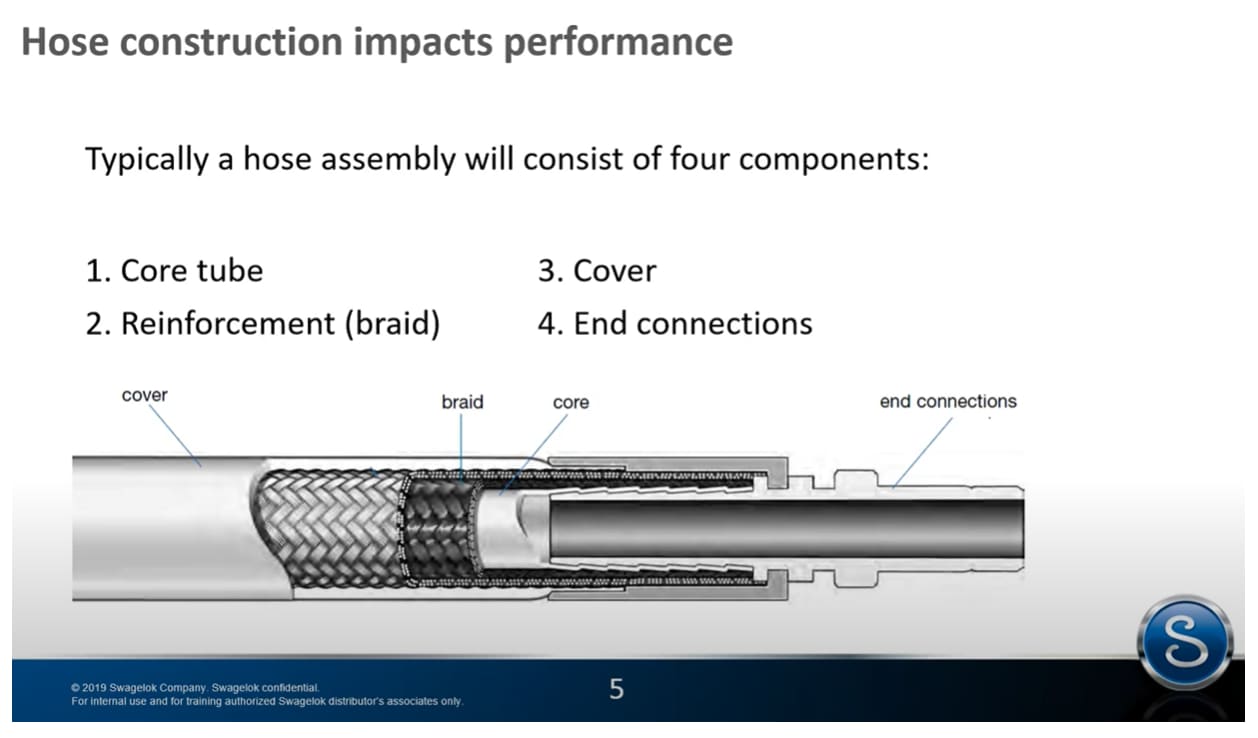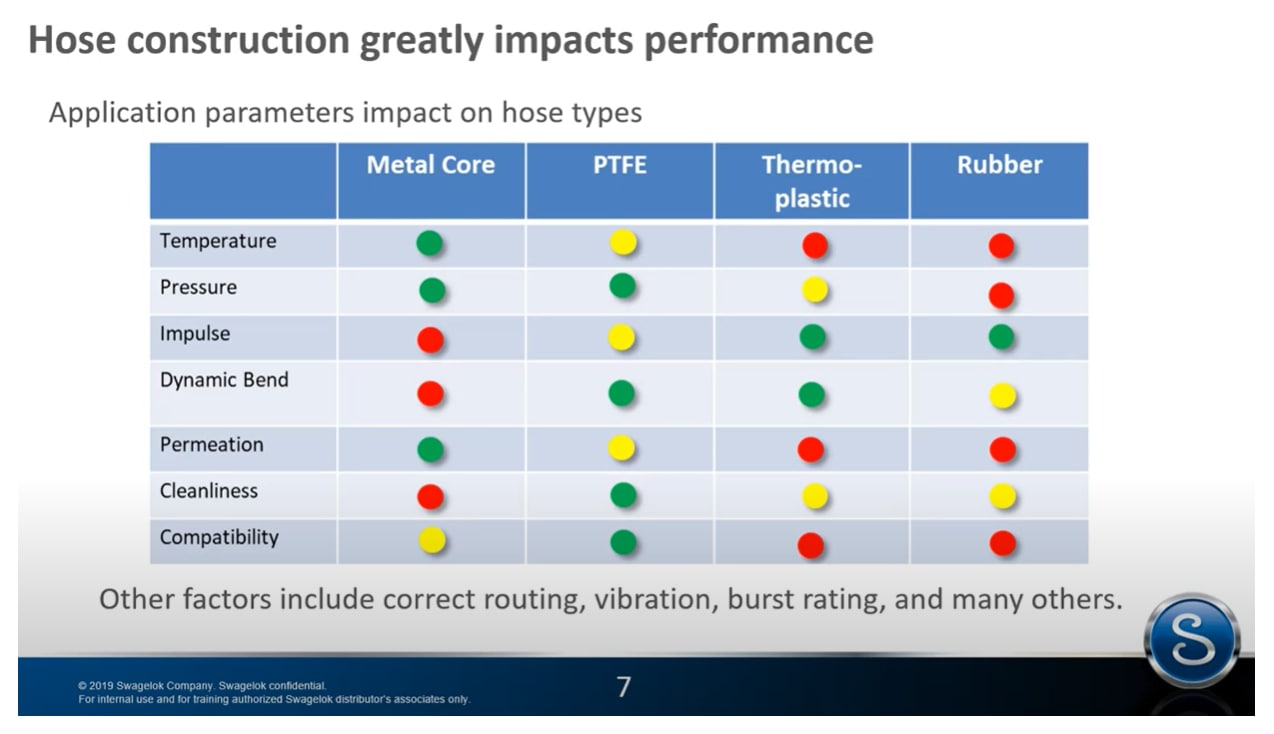Understanding Different Industrial Hose Types
This article and accompanying video are excerpts from the Swagelok® Hose Selection Webinar presented by Swagelok Senior Product Manager, Doug Nordstrom.
Let's get started by discussing some background on different hose types. Obviously, hose is made differently than tubing. Hose is multi-layered. Whenever we talk about tubing, it's one layer of material, whether it's stainless steel tubing or PFA tubing. A hose, however, has multiple layers.
The core material is the material that obviously sees the media that's flowing through the hose. Everything else is there for either protection or pressure containment (things like braids, reinforcements, and possibly covers).
In the picture above, it's a silicone cover that we put on the hose to possibly add abrasion resistance and also make the hose outside more cleanable. Then we put in connections. For softer core materials, like PTFE or Teflon, we can squeeze or crimp the hose. On metal hoses, of course, we have to weld the hose on. These can change the way a hose performs.
Different Hose Core Materials
It's key to understand every layer of the hose in order to apply the right hose to the right application. Some common materials, we list here. The top one is a metal core. The actual core material is metal, and it's convoluted so that the actual core can bend. If it was just a straight core like a piece of tube, it obviously wouldn't bend and it would break quickly. So we convolute the core and weld it to the end to make a very flexible metal hose.
A fluoropolymer or PTFE core is the second one on the list here. And that's a crimp tank connection that we put on and the actual core material doesn't withstand much pressure. So we need to braid this one (and the metal hose) to give it pressure containment.
Thermoplastic hose is really designed for hydraulic pressure impulses and the like. It can withstand a lot of abuse and pressure spikes.
The last one on the list here is more of a down and dirty type. It's a rubber hose. These are relatively low cost, and they can withstand the most amount of abuse, but they're not really suited for higher technical applications.
If you apply the wrong hose to an application, the life of the hose will be dramatically impacted. And this is something that many people don't understand. The right hose for the right application can deliver a significantly longer life.
Each hose type has its strengths and weaknesses. As you see in the above graph, the metal core is good for temperature pressure because it withstands or limits permeation, but it can bend like a paperclip and will break faster than other types of hoses. So it's always important to apply the right hose for the right application.
To learn more about industrial hoses, watch the Swagelok® Hose Selection Webinar, visit our Swagelok hose product page, or contact us at 412.761.3212.


